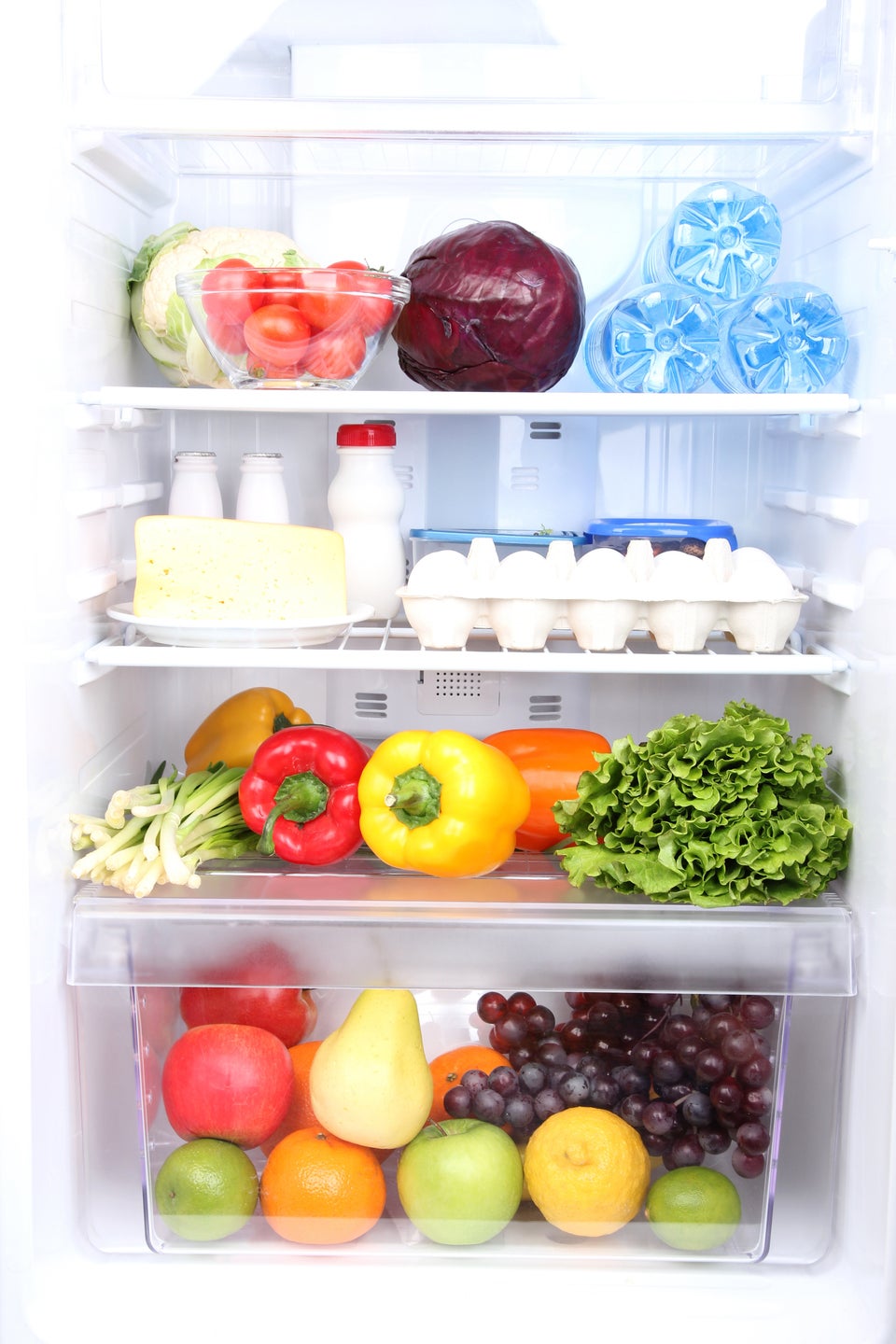At some point, you've probably been told the kitchen is dirtier than the average toilet seat. (Not your kitchen, of course, but you know, the general idea of a kitchen.) So, you've no doubt been paying special attention to your sponges, sinks and countertops to prevent you and your family from contracting foodborne illnesses in your own home, right? But there are still some things you probably haven't been cleaning all this time.
Here are some of the more surprising places where harmful pathogens -- or at the very least, disgusting grime -- might be lurking. Don't forget about them this spring cleaning season.

Are you opening cans and sticking the can opener straight back in the drawer? According to a 2013 study by the nonprofit public health group NSF International, you might be putting some nice strains of E. coli and salmonella in there, too. Or at least letting some food juice congeal in your utensil drawer.
Mold and yeast were also found on some of the can openers, posing a potential problem for anyone sensitive to allergy attacks. Luckily, cleaning is easy! Simply place your can opener in the dishwasher after each use, or hand-wash in hot, soapy water, making sure all residue is removed from the blades in particular, since those are most likely to come in contact with your food.

A "gasket" is the rubber seal at the base of most blender glasses that helps prevent leaks. The 2013 NSF study found this teensy part to be the third most germ-infested area of the home, often harboring salmonella, E. coli, yeast and mold. Microbiologist Lisa Yakas explained how negligence allows our blenders to get this way.
“People just take the lid off and put that whole jar with the base and everything into the dishwasher," she said. "So every time that you use it and it sees different food, it just gets more and more gunky.”
Instead, you should disassemble the whole jar base and put it in the dishwasher, or just wash with hot, soapy water if your blender isn't dishwasher-safe.

Thanks to reusable bags, we've been saving a lot of plastic from heading toward the landfill or suffocating sea turtles. But it's possible that as we're helping the environment, we're hurting ourselves. A 2012 Berkeley University study found an increase in emergency room admissions due to food poisoning in the San Francisco area following the city's 2007 ban on plastic grocery bags, suggesting a possible correlation. Reusable bags are great, but they're not self-cleaning. Another study found E. coli bacteria on 12 percent of bags sampled, and bacteria on those contaminated with meat juices increased tenfold after two hours in the warm trunk of a car.
Notorious "clean person" and author Jolie Kerr recommends wiping down reusable bags with a paper or cloth towel sprayed with an all-purpose cleaner or white vinegar -- a natural disinfectant -- and let air-dry completely. You may find it easiest to turn the bags inside-out to scrub down the inside. When using the bags, make sure to wrap meat in a plastic bag to prevent leakage onto other foods, don't use them for anything -- gym clothes, baby bottles, etc. -- other than groceries, and store in a cool, dry space.
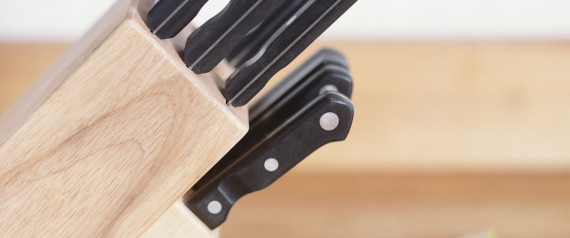
Small, dark crevices -- such as the slots where you store your knives -- are obvious places for bacteria to thrive. Sure, your knives are clean when you put them back there, but a little bit of moisture and potentially years of neglect can still serve as a welcome mat for mold and other tiny organisms.
They seem impossible to clean, but Kerr has some tips. First, use canned air to dislodge any debris, then turn the block upside down over a trash can to knock out as much as possible. Next, using a pipe cleaner sprayed with all-purpose spray or white vinegar, swab out each slot, allowing the block to dry for at least a half hour before putting the knives back in.

According to a 2011 University of Ljubljana study, of 189 household dishwashers examined in 101 global cities on six continents, more than 60 percent contain some kind of fungi on the rubber seal around the appliance door. Over 50 percent contained black yeast, which has been known to cause -- albeit very rarely -- infections in humans. Another study published in a 2013 volume of the journal Medical Mycology found potentially harmful yeasts growing commonly in dishwashers.
So while this part of your dishwasher isn't likely to land you an infection, we're willing to guess you don't really want a bunch of fungi growing there. Clean the seal with a spray solution of one part white vinegar to four parts hot water, scrubbing with a small brush. On the inside, scrub off any obvious food particles before running one dishwasher-safe cup of white vinegar through the hottest wash cycle.
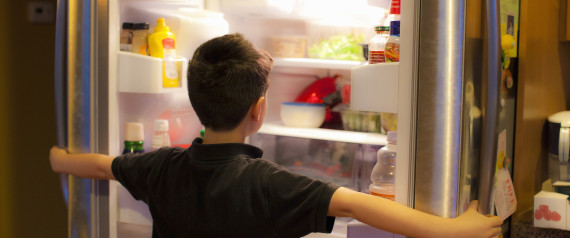
You may guess why the refrigerator, home of moldy cheese and partially decaying kale, might need a good scrub now and again. NSF found the veggie crispers and meat compartments to be the top germiest spot in the kitchen, harboring salmonella, E. coli, listeria, yeast and mold.
To clean these bulky compartments, Jolie recommends removing them from the fridge and washing them in your (clean) bathtub with dish soap or white vinegar. Alternatively, a patio area with an outdoor hose can serve as a good spot to get the job done.
While a 2013 study on organisms inside refrigerators and published in the journal Current Microbiology did not find any that would cause illness, the researchers nonetheless suggested that cleaning the space regularly could cut back on the risk of such pathogens colonizing your fridge.

Since rubber spatulas often come in two parts -- handle and blade -- organisms including mold and E. coli can get stuck where they meet if they're not cleaned properly. Avoid stirring your delicious cookie batter with a utensil caked in nasty foodstuffs by taking the thing apart before sticking it in the dishwasher, or simply by soaking it in hot soapy water and paying special attention to the point where the handle meets the blade.

Perhaps the most oft-forgotten area of the kitchen is that space between the top of your kitchen cabinets and the ceiling. What gross stuff is lurking up there? Do you even know?
You'll need a step stool and a duster for this project -- and make sure there's no food laying out below the cabinets where dust and grime could float down. Wipe off any standing dust and debris, then take a paper or cloth towel sprayed with all-purpose cleaner or white vinegar to the surface. ApartmentTherapy recommends tearing off a long sheet of parchment paper and placing it on top of your cabinets afterward to collect dust in the future and make cleanup easy.
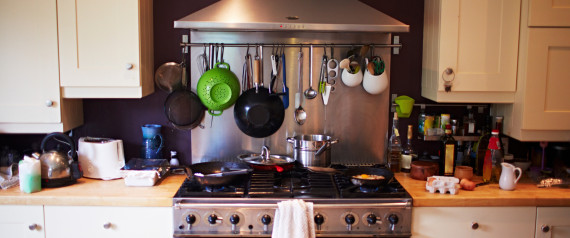
These are perhaps the most frequently contaminated parts of the kitchen, but how often do you clean them? Probably not often enough. Several studies have found knobs and handles to be among the most contaminated spots in the entire household, harboring pathogens from E. coli to staphylococcus. And while microbes die off after time, oil and grime buildup means pulling a never-been-cleaned cabinet handle is almost like shaking hands with everyone who's ever used your kitchen -- in any circumstance -- all at once.
Stove knobs and handles of cabinets, refrigerators, dishwashers, faucets and drawers should be regularly sanitized with white vinegar or a solution of no more than one tablespoon bleach to one gallon tap water.
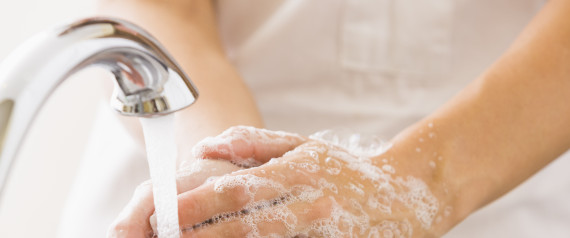
While it isn't likely to make you sick, all that yellowish green stuff caked onto your sink faucet looks pretty disgusting. There's an easy fix, though! Kerr recommends unscrewing the aerator -- that mesh covering where water comes out -- from the body of the faucet and soaking the parts in white vinegar. Ta-da!
All photos via Getty.
